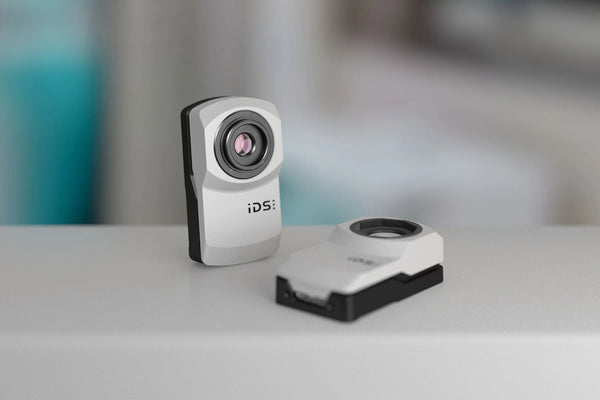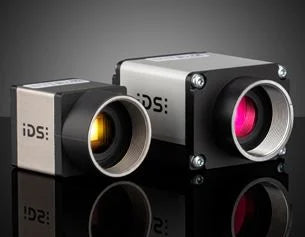In an era where the visual documentation and analysis of data are paramount across various sectors, IDS Cameras have carved out a niche for themselves, standing at the forefront of digital imaging solutions. These cameras are not just tools for capturing images; they are sophisticated devices engineered to meet the rigorous demands of industrial, scientific, and medical imaging with unparalleled precision and versatility.
But what sets IDS Cameras apart from the rest, and how can they transform imaging tasks across different industries? This blog aims to shed light on the essence of IDS Cameras, revealing their unique features, broad spectrum of applications, and guiding principles for selecting the right model to fit your specific needs.
Understanding IDS Cameras
IDS Cameras, produced by Imaging Development Systems, are a hallmark of quality in the field of digital imaging. They are specially designed to tackle the challenges of capturing high-resolution, high-quality images in various professional settings. Unlike standard digital cameras, IDS Cameras are built with the precision, durability, and flexibility required for complex image processing tasks. This makes them an ideal choice for industries where detailed image analysis is crucial, from manufacturing lines to scientific research labs.
Key Features of IDS Cameras
- High Resolution and Image Quality: One of the standout features of IDS Cameras is their ability to produce images of exceptional clarity and detail. This is crucial in applications like microelectronics, where identifying the minutest defects can save substantial costs and time. The high-resolution sensors used in IDS Cameras ensure that every image captured meets the highest standards of quality, facilitating accurate analysis and decision-making.
- Versatility: IDS offers an extensive range of camera models, including USB 2.0, USB 3.0, USB3 Vision, GigE, and 3D cameras, each designed to cater to specific requirements. This versatility allows users to select a camera best suited to their application's unique demands, whether it’s the need for high-speed data transfer, long-distance connectivity, or 3D imaging capabilities.
- Ease of Use: Despite their advanced capabilities, IDS Cameras are renowned for their user-friendly operation. The included IDS Software Suite is a comprehensive package that provides tools and APIs for easy integration and customization of the cameras into various systems. This ease of use extends the accessibility of high-quality imaging to users who may not have specialized technical expertise.
- Durability: Designed to withstand the rigors of industrial environments, IDS Cameras are encased in robust housings that protect them from dust, moisture, and mechanical impact. This durability ensures that the cameras can reliably operate in harsh conditions without compromising image quality or performance.
Applications of IDS Cameras
Industrial Automation
In the realm of industrial automation, precision and reliability are non-negotiable. IDS Cameras are instrumental in automating quality control processes, enabling real-time monitoring of production lines, and facilitating machine vision for robotics. Their high-speed imaging capabilities allow for the capture of moving objects on assembly lines, ensuring that manufacturing processes meet stringent quality standards.
Medical and Life Sciences
The medical and life sciences fields benefit immensely from the detailed imaging provided by IDS Cameras. In applications ranging from digital microscopy to diagnostic imaging, these cameras offer the resolution and color fidelity necessary for accurate analysis. Furthermore, their compact size and compatibility with various imaging software make them a versatile tool for medical research and laboratory use.
Logistics and Transportation
Efficiency and safety in logistics and transportation are significantly enhanced by the application of IDS Cameras. Their use in traffic monitoring systems helps in managing traffic flow and detecting incidents in real time. Additionally, IDS Cameras are used in automated toll collection and vehicle identification systems, streamlining operations and reducing manual intervention.
Research and Development
IDS Cameras play a pivotal role in cutting-edge research across multiple disciplines, including robotics, artificial intelligence, and environmental science. Their ability to provide detailed imaging under varied conditions makes them an invaluable resource for researchers looking to gather accurate data and test hypotheses in innovative ways.
Choosing the Right IDS Camera for Your Needs
Selecting the ideal IDS Camera for your specific needs is a critical step towards achieving optimal imaging results. This selection process involves a comprehensive evaluation of various technical specifications and requirements. Let’s dive deeper into the factors you should consider to make an informed choice:
1. Understanding Your Application's Imaging Requirements
The first step in choosing the right IDS Camera is to have a clear understanding of what you need the camera to do. Consider the following:
- Resolution Needs: How detailed do your images need to be? Higher resolution cameras capture more detail, which is essential for applications like quality control inspections or detailed scientific research. However, higher resolution images also require more storage space and processing power.
- Frame Rate Requirements: How fast do you need the camera to capture images? High frame rates are crucial for capturing fast-moving objects in applications such as traffic monitoring or high-speed manufacturing processes. Remember, higher frame rates at high resolutions require robust data handling capabilities.
- Color vs. Monochrome: Determine whether your application requires color images or if monochrome images will suffice. Color cameras are essential for tasks where color differentiation is crucial, such as in medical imaging. Monochrome cameras, however, offer higher sensitivity and are often more suitable for low-light conditions.
2. Assessing Environmental Conditions
The environment in which the camera will operate plays a significant role in your selection process:
- Industrial Environments: For cameras deployed in industrial settings, consider factors like exposure to dust, moisture, vibrations, and extreme temperatures. IDS Cameras designed for industrial use are built to withstand harsh conditions without compromising image quality.
- Outdoor Use: If the camera is to be used outdoors, factors such as weatherproofing and the ability to handle varying light conditions become important.
- Space Constraints: The physical size of the camera might also be a consideration, especially in compact setups or where the camera needs to be integrated into existing systems with limited space.
3. Connectivity Options
Connectivity is another crucial aspect to consider. IDS Cameras offer various connectivity options, including USB 2.0, USB 3.0, USB3 Vision, and GigE. Each has its advantages:
- USB Cameras are typically easier to set up and ideal for applications where the camera is close to the processing unit. USB 3.0 and USB3 Vision cameras offer higher data transfer rates compared to USB 2.0, suitable for high-resolution, high-frame-rate imaging.
- GigE Cameras are better suited for situations requiring long cable lengths without significant loss of data transmission speed, making them ideal for large industrial settings or when the camera needs to be placed far from the control station.
4. Sensitivity and Lighting Conditions
The sensitivity of the camera sensor is crucial, especially in low-light conditions or for high-speed imaging. A camera with high sensitivity can capture clearer images in less-than-ideal lighting conditions, reducing the need for additional lighting equipment.
5. Software and Hardware Compatibility
Ensure that the camera is compatible with your existing software and hardware. This includes checking for driver compatibility, SDKs (Software Development Kits) availability for custom application development, and compatibility with image processing software. IDS offers comprehensive software support, making integration easier for developers.
Your Next Steps
The journey to selecting the perfect IDS Camera for your needs is intricate, requiring a deep dive into your project's unique specifications, environmental challenges, and technical demands. By engaging with the factors we've outlined, you're well on your way to securing a solution that not only meets your expectations but significantly surpasses them. However, the key to truly unlocking the full potential of what IDS Cameras have to offer lies in leveraging the expertise available to you.
Make your next step a conversation with LoreTech Technology's specialists. Allow us to guide you to the perfect balance of resolution, frame rate, connectivity, and environmental adaptability, tailored specifically to your project's needs. With LoreTech Technology, you're not just choosing a camera; you're choosing a partner dedicated to ensuring your vision comes to life with the utmost clarity and precision. Contact us today to discover how we can elevate your imaging capabilities to new heights.









